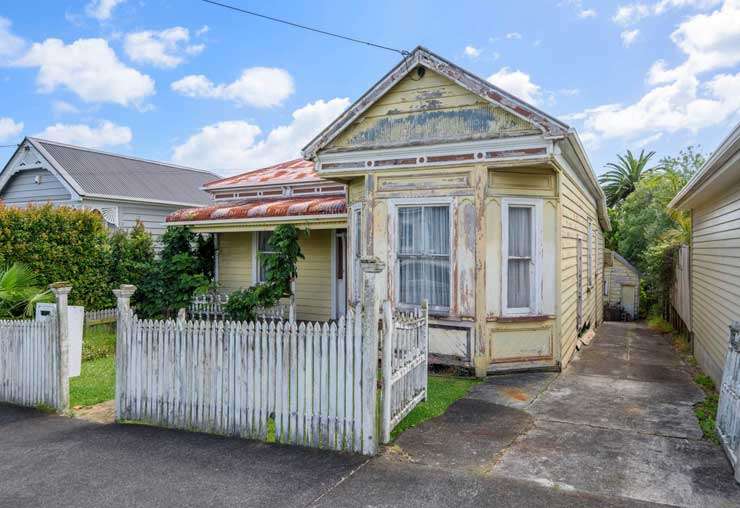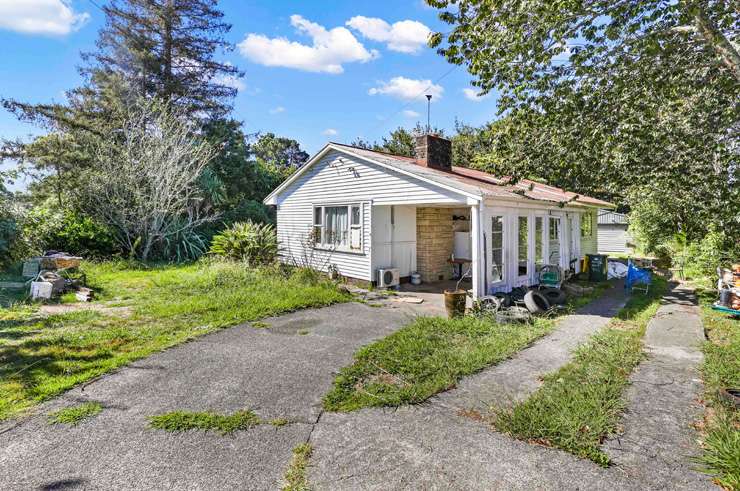A run-down villa may have been a smart option in the past but many first home buyers now don’t want the hassle. Photo / Getty Images
Buying a tired or run-down property in a good location with the intention of renovating it is commonly believed to be a good real estate strategy. For generations of Kiwi buyers, buying the worst house on the best street was their only route into the housing market, and for years the approach has delivered healthy profits at time of sale.
But recent spikes in house prices, tighter credit rules and cost escalations in the building industry are making harder for renovators to make the sums work in their favour. When you’re paying more than $1m for a “dump” (and more than $2m in some parts of Auckland), you want to know you can afford to renovate it.
However, the growing cost of building products and shortage of builders could result in both a costly and lengthy renovation project – even if the house was snapped up at a bargain price.
Start your property search
Mortgage Lab founder Rupert Gough says homeowners looking to purchase a do-up in the current market should look to buy “ugly but not broken” houses.
Houses that are need of repair are not popular with banks, which are increasingly reluctant to lend buyers the extra funds required for the renovation work.
Buyers in that position could always move into the property and slowly chip away at the work, but Gough warns there is always the concern that they will uncover bigger and costlier problems.
“There’s a really fine line between renovating and buying a junk house that banks don’t like,” he says, adding that banks are likely to turn down home loans for properties that require work or have compliance issues.
“Cosmetic work almost always yields more than you put in. So if you spend $20,000 putting in a nice carpet and painting a property, you’ll usually get more than that back when you sell.”
Gough says broken houses should be left to professional traders, who buy such properties to do up and flick, as they are often in a stronger cash position.

This rundown villa in Auckland’s Grey Lynn sold for $2.2m last year. Photo / Supplied
Red Bricks founder and agent Rupert Bain says most first home buyers these days don’t want “sweat equity”.
“They very much want to walk into something that’s all done. Their hobbies, their careers – there's just no inclination to do it.”
Lodge real estate agent Mike Thomas says 1960s to 1980s houses in good areas were still in demand for certain buyers such as builders looking for small projects while waiting for building product for other projects to arrive.
In the past few days, the Hamilton agent had been contacted by dozens of clients considering reinvesting in housing.
Thomas sold an original 1960s do-up on Murray Street, in Maeroa, Hamilton, for $635,000 to a builder last month. The auction pulled in two bidders and he envisages there being competition for similar properties – particularly in older, sought-after locations - if they went to market.
“Anything in the city that is undervalued, that is really tired and in a good spot – that could be anywhere from the Melville, Glenview, hospital area to Queenwood and Chartwell,” he says.

A 1960s house in Maeroa, Hamilton, sold to a builder last month for $635,000. Photo / Supplied
New Zealand Institute of Quantity Surveyors president Martin Bisset says some of the costs linked to renovating and building have increased significantly in the past year – another major consideration for those wanting to renovate and still make a profit.
Building materials are now substantially more with structural/framing timber rising 18%, plasterboard 17% and insulation 15%, while some other materials have increased by over 30%.
Bisset says building quotes were often subject to price increases rather than a fixed price and deposits could be required to secure materials. This could make it tricky for renovators to give the money upfront if banks refused to provide the funds until the materials were on-site.
When it comes to renovating a small South Auckland home, CoreLogic's renovation calculator estimated a basic kitchen would cost $19,000, a basic bathroom would be $15,000, and painting the walls would be $10,500.
The average cost of additions/alterations has risen 12.6% to $82,247, Statistics NZ figures show.
Refresh Renovations director Chris Caiger says renovations are definitely a viable option because the cost of renovating a home was still much cheaper than building a new home, where costs have risen anywhere between 15% and 50%.
He expects demand for house renovations from speculative buyers to drop but demand to increase among owner-occupiers wanting to carry out bigger projects such as extensions.
“Renovations are something people are still doing and getting a return on. It’s not really an investment though, it’s more that they’ve got equity in the house and they want it to be a nice place to live in.”


















































































